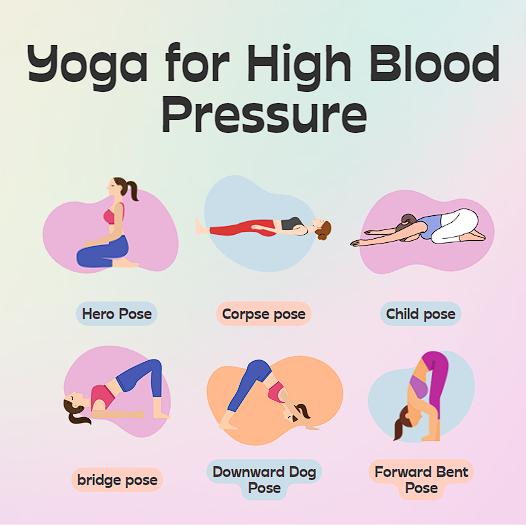What is Yoga?
The literal meaning of yoga is to unite. Yoga is a spiritual process in which the body and soul are united. The word yoga is derived from the Sanskrit word yuj. Yoga originated in ancient India. Yoga is the science of living life in the right way and we all should include it in our daily lives. Yoga has now spread to China, Japan, Tibet, South East Asia, and Sri Lanka along with Buddhism and is currently spreading very fast all over the world.
Benefits of Yoga Asana
There are no one or two benefits of yoga, let us know the following benefits of yoga. When we do yoga, many actions like stretching and twisting of muscles take place and this removes the fatigue of our body and we always feel refreshed. Medical research shows that yoga helps us to maintain good health both physically and mentally. Let us know some more benefits of yoga.
- Peace of mind: Yoga not only gives good exercise to the muscles of our body but also helps in keeping our mind calm and provides energy to our mind. This increases our thinking ability and keeps the mind calm.
- Blood sugar control: With the help of yoga, we can also control our blood sugar to a great extent. Yoga is very beneficial for diabetes patients. By practicing yoga, the function of the pancreas and insulin in our body improves, due to which the amount of sugar in the blood is maintained.
- Stress-free life: If we include yoga in our daily routine, then we can live a stress-free life. Studies show that today every second person is suffering from stress. With the help of yoga, we can control it to a great extent.
- Disease-free body:- Yoga makes our body healthy. Because yoga gives us the power to fight diseases. Yoga is recommended for many other diseases like heart disease, diabetes, and asthma.
- Weight control: About 16% of the world and 67% of the population in America suffer from obesity. However, we can control obesity by including yoga in our lifestyle. Yoga also helps in making our body flexible.
Apart from this, there are some other benefits of yoga like improving muscle flexibility, improving body posture and alignment, better digestive system, curing asthma, curing diabetes, and helping in treating heart-related problems. Yoga makes the skin glow and improves concentration.
Yoga for health
Yoga is an ancient practice that involves gentle exercise, breath control, and meditation. Practicing yoga every day helps maintain good health and strengthens our immune system, which helps fight diseases.
Five health benefits of yoga
- Strength, balance and flexibility: Strength, balance and flexibility are some of the main benefits of yoga. Regular yoga keeps our body flexible which reduces the chances of injuries, improves sports and work efficiency and makes difficult postures easier to perform. Apart from this, regular yoga helps us gain immense strength and maintain a balanced body.
- Reduces symptoms of arthritis: Doing yoga daily can help in reducing various types of arthritis or problems like joint pain and can increase the flexibility and function of the joints and reduce stress.
- Helps in better sleep: Practicing yoga every day helps us in better sleep. It keeps your mind balanced and increases concentration.
- Helps to reduce blood sugar: Along with reducing our blood sugar, yoga also reduces bad cholesterol while increasing good cholesterol. Doing yoga maintains our blood sugar.
- Yoga helps to reduce back pain: Yoga is as good as bunion stretching for reducing pain and improving mobility in people suffering from lower back pain. According to WHO, yoga is a very good treatment for our back pain. We should include it in our daily routine.
List of yoga asanas
| 1. Vajrasana 2. Pawanmuktasana 3. Bhujangasana 4. Dhanurasana 5. Gokilasana 6. Halasana 7. Padmasana 8. Chakrasana 9. Matsyasana 10. Parvatasana 11. Trikonasana 12. Samasana 13. Sukhasana 14. Gomukhasana 15 Bhadrasana 16. Hastasana 17. Virabhadrasana 18. Shasangasana 19. Ashtavakrasana 20. Akarshan Dhanurasana | 21. Pranasana 22. Ardha Matsyendrasana 23. Matsyendrasana 24. Hansasana 25. Uttan Pada Asana 26. Advasana 27. Makarasana 28. Ushtrasana 29 Ardha Padmasana 30. Karnapeetha Asana 31. Tadasana 32. Utkatasana 33. Ardha Kurma Pose 34. Baddha Padmasana 35. Ardha Pada Asana 36. Ekapadangusthasana 37. Vatayana Asana 38. Hasta Vrksasana 39. Vrichikasana 40. Yoga Nidra Pose |
Types of Yoga
There are four main types of yoga: Raja Yoga, Karma Yoga, Bhakti Yoga and Gyan Yoga.
- Raj Yoga: Raja Yoga means royal yoga. Meditation is important in this. Raja Yoga has eight parts: Yama (vows), Niyama (conduct discipline), Asana (postures), Pranayama (faith control), Pratyahara (control of senses), Dharana (concentration), Dhyana (meditation), and Samadhi (ecstasy or final liberation).
- Karma Yoga: Everyone does this yoga. Karma Yoga is the path of service. The principle of Karma Yoga is that what we experience today changes in the past through our actions. By being aware, we can create a better future from the present and stay away from selfishness and negativity.
- Path of devotion: Bhakti Yoga means everyone meeting God. It describes the path of devotion. In which it is told that we all should worship and have faith in God.
- Gyan Yoga: If Bhakti is considered the yoga of the mind, then Gyan Yoga is the yoga of the intellect. This is the path of sages or scholars. It requires the development of intellect through the study of scriptures and texts. Gyan yoga is considered to be the most difficult yoga. Gyan yoga is mostly practiced by experts and practitioners.



